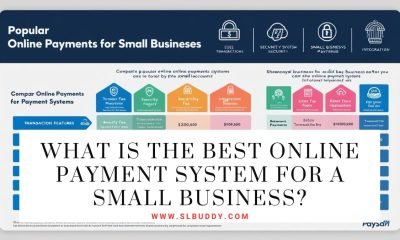
For busy companies, staying in touch with clients efficiently can be a challenge.
However, with the right tools and strategies, you can streamline your client communication processes, ensuring that your clients feel valued and well-informed.
In this blog post, we’ll explore the best options for client communication that busy companies can implement to enhance their client relationships and boost productivity.
Contact Centre Outsourcing
For many busy companies, managing client communication can be overwhelming, particularly when dealing with high call volumes and complex support needs.
This is where contact center outsourcing with TSA Group can be a game-changer. By partnering with a reputable outsourcing provider, you can offload the burden of customer support, telemarketing, and other communication tasks.
Outsourcing contact center operations offers several advantages:
# Scalability: Outsourcing allows you to scale your customer support operations up or down quickly based on demand, ensuring that you can handle fluctuations in call volume without the hassle of hiring or laying off staff.
# Expertise: Outsourcing providers often have experienced agents and access to cutting-edge technology. This means that your clients will receive top-notch service, and you can leverage the expertise of professionals who specialize in client communication.
# Cost Efficiency: Outsourcing can be cost-effective when compared to maintaining an in-house contact center. You can save on overhead costs, training expenses, and technology investments.
# Focus on Core Business: By outsourcing client communication, your company can concentrate on its core competencies and strategic initiatives. This can lead to increased productivity and growth.
Email Communication
Email remains a tried-and-true method for client communication. It allows you to send detailed messages, documents, and updates to clients at their convenience.
To make the most of email communication, consider using templates for common responses, scheduling emails to be sent at optimal times, and setting up filters to organize your inbox efficiently.
Additionally, you can use email tracking tools to see when clients open your emails, providing insights into their engagement.
Client Portals
Client portals are secure online platforms that provide clients with access to important information, documents, and project updates.
They offer a centralized location for clients to interact with your company.
By using client portals, you can reduce email clutter, enhance transparency, and allow clients to self-serve when they need information.
Modern client portal solutions often include features like file sharing, messaging, and task management.
# Efficient Document Sharing: Client portals enable easy and secure sharing of documents and files. You can upload important project documents, contracts, reports, and more, allowing clients to access them anytime, anywhere. This reduces the back-and-forth of email attachments and ensures everyone is on the same page.
# Real-Time Updates: Modern client portals often provide real-time project updates and notifications. Clients can stay informed about project progress, milestones, and deadlines without the need for constant communication. This real-time access enhances transparency and trust in your client relationships.
# Task Management: Some client portals offer task management capabilities, allowing you to assign tasks, set deadlines, and track progress collaboratively. This feature ensures that everyone is accountable for their responsibilities and helps streamline project workflows.
Video Conferencing
In an era of remote work, video conferencing has become indispensable for client meetings.
Platforms like Zoom, Microsoft Teams, and Google Meet allow you to connect with clients face-to-face, even when miles apart.
These tools offer screen sharing, chat features, and recording capabilities, making it easier to collaborate and share important information with your clients.
Ensure you schedule meetings at convenient times for all parties involved and have a backup plan in case of technical issues.
Customer Relationship Management (CRM) Software
CRM software systems help busy companies manage client relationships more efficiently.
They provide a centralized database for client information, communication history, and upcoming tasks.
CRMs automate many routine tasks, such as sending follow-up emails and reminders, freeing up your team’s time for more strategic client interactions.
Moreover, CRMs offer data analytics that can help you understand client preferences and behavior better.
# Centralized Client Data: CRMs serve as a single repository for all client-related information, including contact details, communication history, purchase history, and preferences. This centralized database ensures that your team has quick access to the most up-to-date client information, reducing the chances of miscommunication or overlooking important details.
# Automation of Routine Tasks: CRMs excel at automating repetitive tasks, such as sending follow-up emails, appointment reminders, and birthday greetings. Automation ensures that clients receive timely and relevant messages, enhancing engagement and maintaining top-of-mind awareness.
Social Media and Messaging Apps
Social media and messaging apps have become essential communication channels. These platforms offer a more casual and real-time way to interact with clients.
Consider creating and maintaining a strong presence on social media platforms relevant to your industry.
You can use them to share updates, respond to inquiries, and even conduct live Q&A sessions with your clients.
Messaging apps like WhatsApp and Facebook Messenger can also be useful for quick, informal communication with clients.
However, it’s important to establish clear boundaries and privacy guidelines to maintain professionalism.
Automated Email Marketing
To keep clients informed and engaged, consider implementing automated email marketing campaigns.
Email marketing tools like Mailchimp and Constant Contact allow you to send personalized and targeted messages to your client base.
You can set up automated drip campaigns to nurture leads, send regular newsletters, and share valuable content with your clients.
These campaigns not only save you time but also help you maintain consistent communication, keeping your brand top-of-mind for clients.
Phone and VoIP Services
While digital communication methods are essential, don’t underestimate the power of a good old-fashioned phone call.
Sometimes, a phone conversation can build rapport and resolve issues more effectively than written communication.
Voice over Internet Protocol (VoIP) services like Skype and RingCentral offer cost-effective solutions for making calls, hosting conference calls, and sending SMS messages.
VoIP services also allow for call recording, which can be invaluable for documentation and training purposes.
Don’t miss: 6 Principles and Strategies on Identifying Business Opportunities
The bottom line
The options discussed offer a range of tools and strategies to suit your specific needs.
By leveraging these options, you can not only save time and enhance client satisfaction but also build a reputation as a responsive and client-focused organization.
Ultimately, the success of your business hinges on your ability to keep clients informed and engaged throughout their journey with you.










